Discover 11 hidden attractions, cool sights, and unusual things to do in Port of Spain (Trinidad and Tobago). Don't miss out on these must-see attractions: Emperor Valley Zoo, Queen's Park Savannah, and National Museum and Art Gallery. Also, be sure to include Holy Trinity Cathedral in your itinerary.
Below, you can find the list of the most amazing places you should visit in Port of Spain (Port of Spain).
Table of Contents
Emperor Valley Zoo
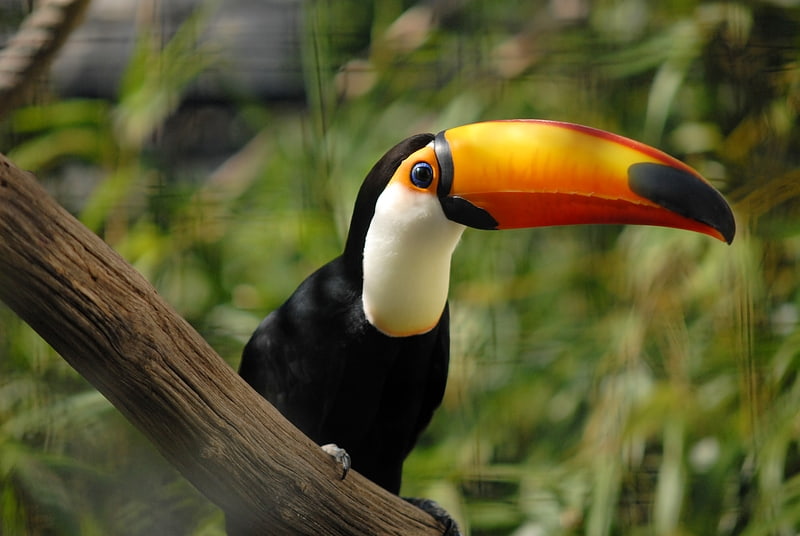
Zoo in the Port of Spain, Trinidad and Tobago. The Emperor Valley Zoo is the only zoo in Trinidad and Tobago. It is located North of the Queen's Park Savannah and West of the Royal Botanic Gardens in Port of Spain.
The zoo was first opened on 8 November 1952 by Governor Sir Hubert Rance. At that time, there were 10 cages containing 127 animals, mainly indigenous species. It now has a collection of over 2300 individuals and over 200 species.
The zoo was named after the large, blue Emperor or Morpho butterfly which once frequented the valley in which the zoo is situated. It covers 7.2 acres.
There are both local and foreign animals: lions, ocelots, parrots, macaws and many more including snakes, caiman, wildfowl giraffes, tigers and others. The categories include small mammals, large cats, a reptile house, aquariums, a deer park, primates and ponds.
The zoo has undergone major upgrades over the past few years, both for upkeep to its existing infrastructure to bring it up to international standards as well as in preparation for additions to its animal stock. These upgrades have been undertaken by the Zoological Society of Trinidad and Tobago (ZSTT). with financial assistance from the government of Trinidad and Tobago to the value of TTD $56 Million.
During the upgrade period there has been the construction of a Giraffe enclosure, which was populated in December 2013 by two giraffes and the addition of a Tiger exhibit which received three tigers in 2014 - two white Bengals and a ginger Bengal. The White Bengals have successfully bred and have had two cubs in January 2015.
On 12 October 2016, the zoo announced that they had received six llamas from a nature park in Texas, USA. Zoo officials stated that of the six llamas, four are female.[1]
Address: Royal Botanic Gardens, Port of Spain
Queen's Park Savannah
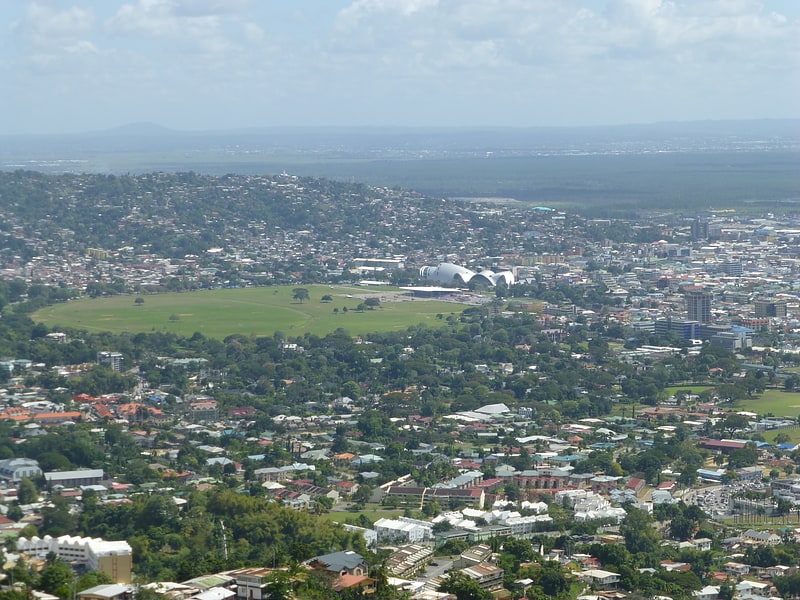
Park in the Port of Spain, Trinidad and Tobago. Queen's Park Savannah is a park in Port of Spain, Trinidad and Tobago. Known locally as simply "the Savannah," it is Port of Spain's largest open space. It occupies about 260 acres of level land, and the distance around the perimeter is about 2.2 mi.[2]
Address: Queen's Park W., Port of Spain
National Museum and Art Gallery
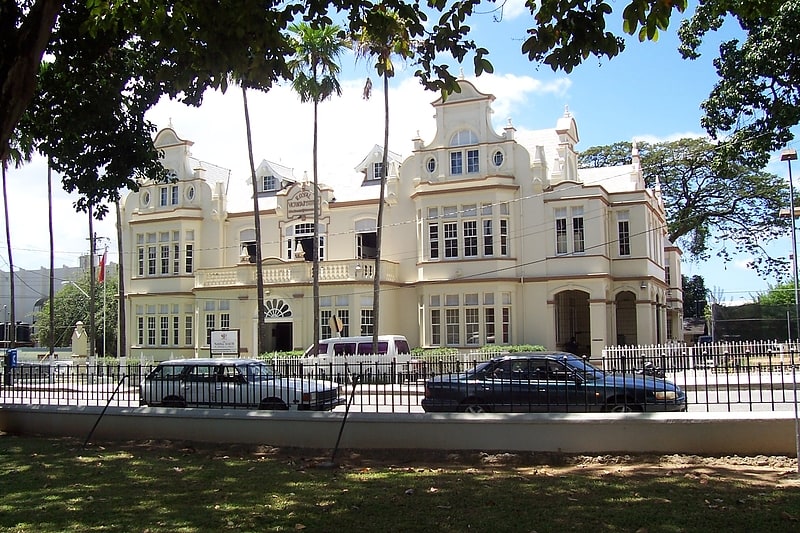
Museum in the Port of Spain, Trinidad and Tobago. The National Museum and Art Gallery is the national museum of Trinidad and Tobago, in Port of Spain on Trinidad island. It is located at the top of Frederick Street, opposite the Memorial Park, and just south of the Queen's Park Savannah.
The museum was established in 1892, as the Royal Victoria Institute. The building is an example of Victorian era colonial style of the British West Indies.[3]
Address: Frederick Street, 00129 Port of Spain
Holy Trinity Cathedral

Church in the Port of Spain, Trinidad and Tobago. Holy Trinity Cathedral, Port of Spain is an Anglican Cathedral in Trinidad and Tobago. The corner stone was laid in 1816 and the current incumbent is Shelley-Ann Tenia.[4]
Address: Abercromby Street 30A, Port of Spain
Royal Botanic Gardens
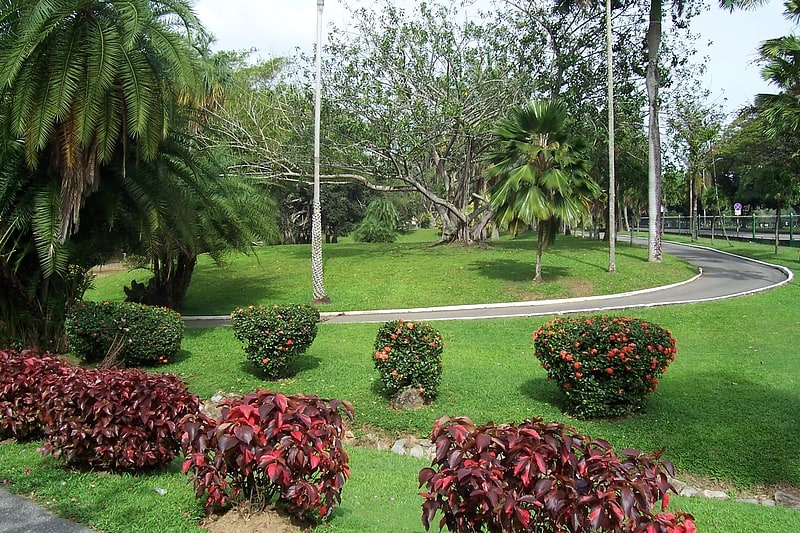
Botanical garden in the Port of Spain, Trinidad and Tobago. The Royal Botanic Gardens in Trinidad and Tobago is located in Port of Spain. The Gardens, which were established in 1818, are situated just north of the Queen's Park Savannah. This is one of the oldest Botanic Gardens in the world. The landscaped site occupies 61.8 acres and contains some 700 trees, of which some 13% are indigenous to Trinidad and Tobago, whilst others are collected from every continent of the world.
The Gardens are open to the public every day of the year from 6 a.m. to 6 p.m.
The grounds include a small burial plot in which former Governors of Trinidad have been buried since 1819.[5]
Address: Queen's Park Savannah, Port of Spain
Cathedral Basilica of the Immaculate Conception
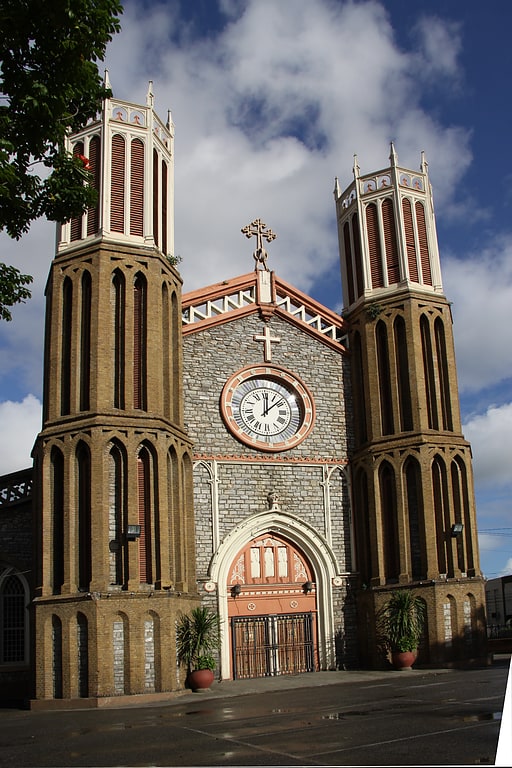
Cathedral in the Port of Spain, Trinidad and Tobago. The Cathedral Basilica of the Immaculate Conception is a Catholic cathedral in Port of Spain, Trinidad and Tobago. It is the seat of the Archdiocese of Port of Spain. Construction started in 1816 and it was completed in 1851. The same year the cathedral was given the honorary status of a Minor Basilica.[6]
Memorial Park

Memorial park in the Port of Spain, Trinidad and Tobago. Memorial Park is an urban park in upper Downtown, Port of Spain, Trinidad and Tobago. Memorial Park is a public city park in commemoration of the Trinidadian veterans that served in World War I and World War II. It is one of the most visited urban parks in the city.[7]
Address: Frederick St., Port of Spain
Fort San Andres
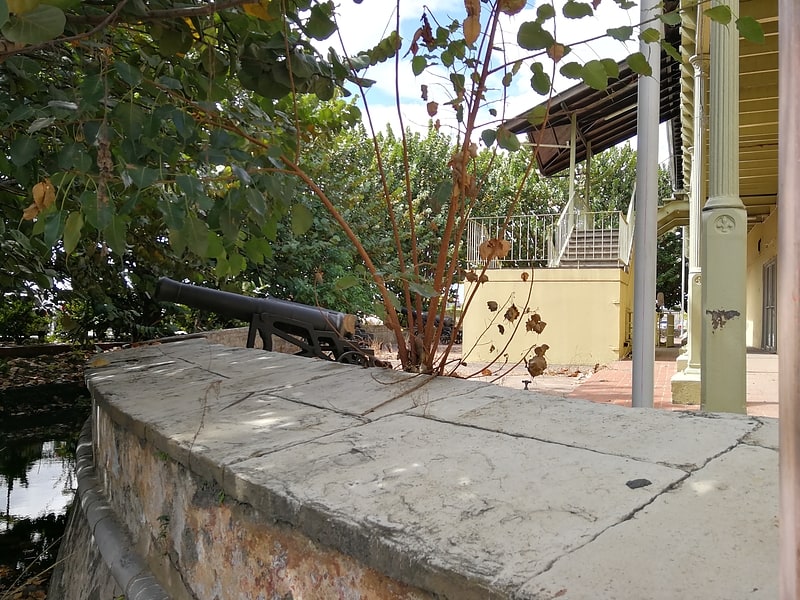
Fort San Andres is the last surviving fortification from the period of the Spanish Occupation of Trinidad, which came to an end in 1797 with the capture of the island by the British.
As early as 1733, a fortification called Fort San Andres was planned to replace a redoubt of fascines and earth, which was the only defense to Port of Spain. This however was not completed until 1787. The redoubt was located more or less where Royal Bank now stands. Port of Spain or as it was known to the Spanish, Puerto de los Hispanioles, initially was restricted to a few streets east of the St. Ann's or Tragarete River which at that time ran west along what is now Park Street and south to the foreshore through what is now Woodford Square and Chacon Street.
St. Ann's River, now better known as the Dry River, was diverted to its present course by the Spanish Governor Chacón and completed in 1787. The new fort was constructed as a mole linked to the mainland by a wooden bridge. The fort mounted five cannon and was "useful in maintaining good order among shipping anchored off-shore".
In 1845, the Port of Spain Town council approved the filling of the Port of Spain waterfront to the northern side of Fort San Andres. Late in the nineteenth century the shoreline was again filled to its present line, completely land-locking the Fort.
The Fort fell into disuse and later a structure was built on the old fort to house the Harbour Master and various other government offices, including the Police Service Traffic Branch. In 1995 the building was restored and converted to a museum of the City of Port of Spain. Several of the original cannons survive and the foundations bear the date 1785.[8]
Address: Independence Square South, 00129 Port of Spain
National Academy for Performing Arts
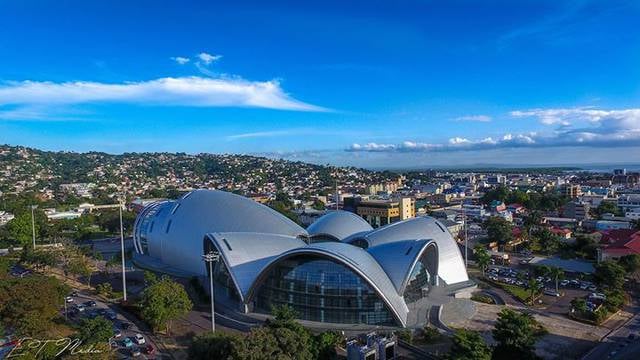
Concerts and shows, Opera, Theater
Address: Pembroke St., Port of Spain
Port of Spain International Waterfront Centre
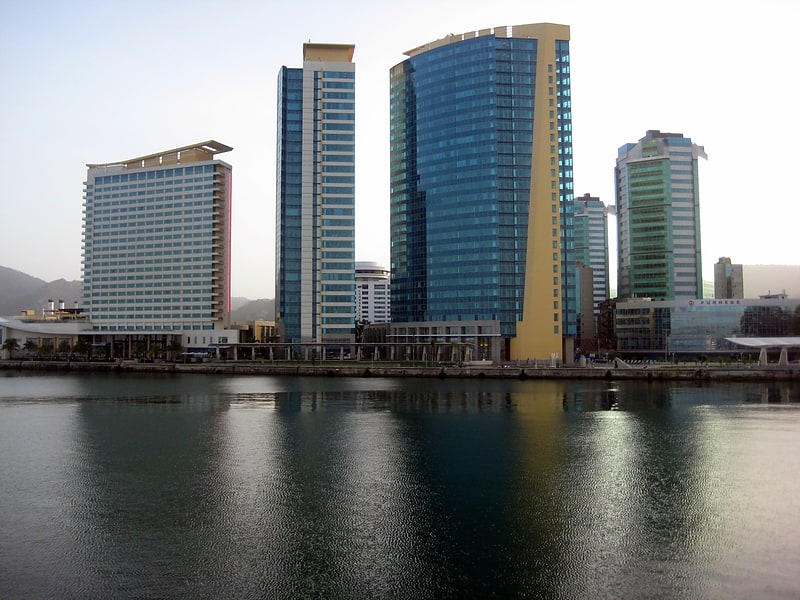
The Port of Spain International Waterfront Centre is a construction project aimed at revitalising and transforming the waterfront of the capital-city Port of Spain located in Trinidad and Tobago. The project is a part of the overall Vision 2020, a government policy attempting to take Trinidad and Tobago to developed country status by 2020. That policy has since been shelved. The towers, which were supposed to usher in the beginning of a "Financial Centre" never materialized, and have slowly been occupied by government departments and offices.
The master plan involves constructing two 26-story office towers, a 22-story Hyatt Regency Hotel, and the English-speaking Caribbean region's largest conference centre. It was completed in 2009. It has since become the tallest building in Trinidad and Tobago at 120 m (390 ft) tall.
The location of the complex is #1 Wrightson Road, Port of Spain.[9]
Address: Wrightson Rd, Port of Spain
Magnificent Seven

The Magnificent Seven are a group of seven mansions located west of the Queen's Park Savannah in northern Port of Spain, Trinidad and Tobago on Maraval Road in the St Clair neighborhood. They were built between 1902 and 1910 on land that was previously used as a government stock farm and are listed as heritage sites at the National Trust of Trinidad and Tobago. Stollmeyer's Castle was the first building in the neighborhood and took several years to complete, as was typical of the Magnificent Seven.
The structures were designed in an array of architectural styles including French Colonial, Scottish baronial, Indian Empire, and Moorish Mediterranean styles—often blended with Caribbean architecture. Many have unusual elements, like the chiming clock and lighted clock tower of Queen's Royal College. Stollmeyer's Castle is said to be modeled after a wing of Balmoral Castle. Hayes Court, a French Colonial style building, has contemporary Scottish cast iron elements and traditional Demerara windows. White Hall is made of natural white limestone of Barbados. Some of the structures were made of imported materials, like Italian marble and Scottish cast iron elements.
Most were originally built as residences and kept within families for decades. Archbishop's House was built as, and remains, the official residence of the Archbishop of Port of Spain. The Anglican Bishop to Trinidad resided in Hayes Court. Queen's Royal College was built as a secondary school for boys.
White Hall was used as the Office of the Prime Minister from 1963 to 2009. White Hall and Stollmeyer's Castle fall under the purview of the Office of the Prime Minister. The two buildings had restoration work so that they could be used by foreign dignitaries visiting Port of Spain. Both buildings were commandeered by the United States Armed Forces during World War II. Most of the Magnificent Seven Houses retain the aesthetics of the original designs. Of the buildings, Milles Fleur is the one most in disrepair due to extended periods where it was not occupied or maintained.[10]
Address: 27 Maraval Road, Port of Spain